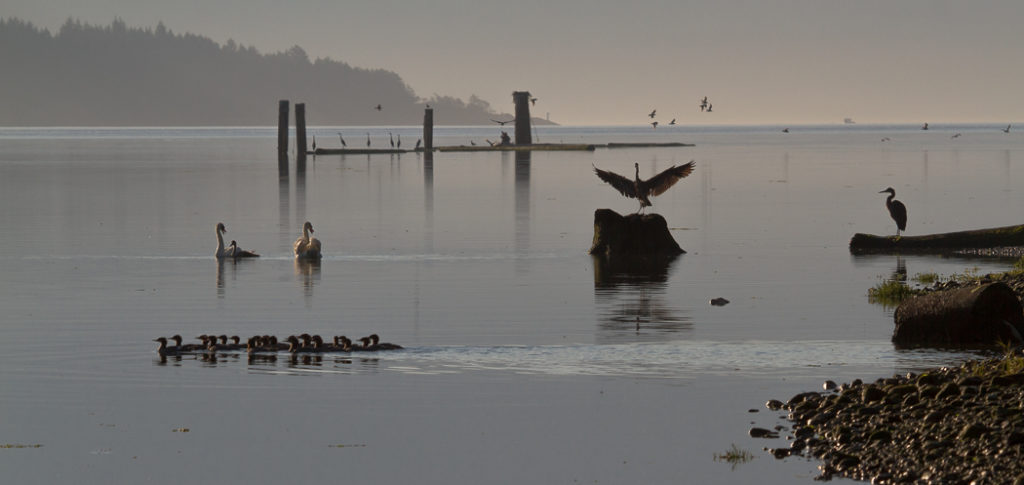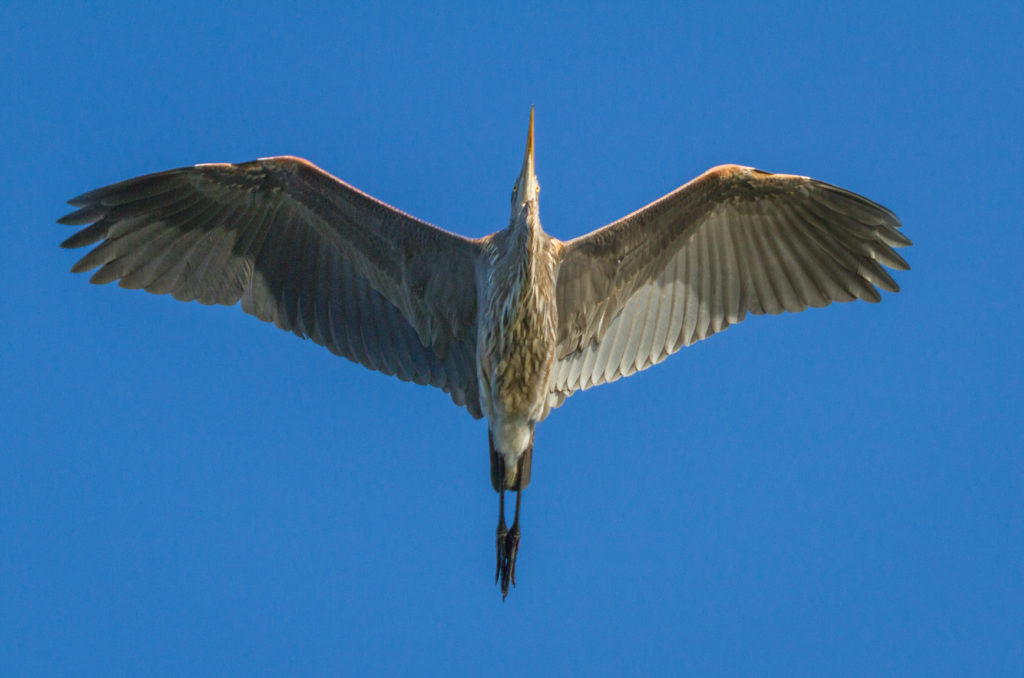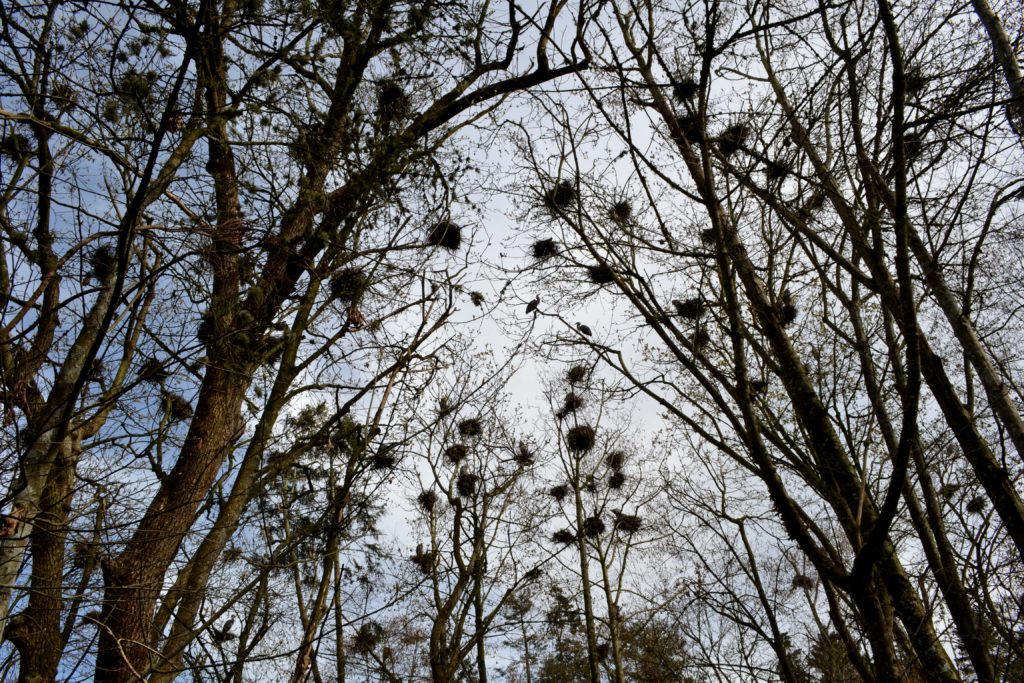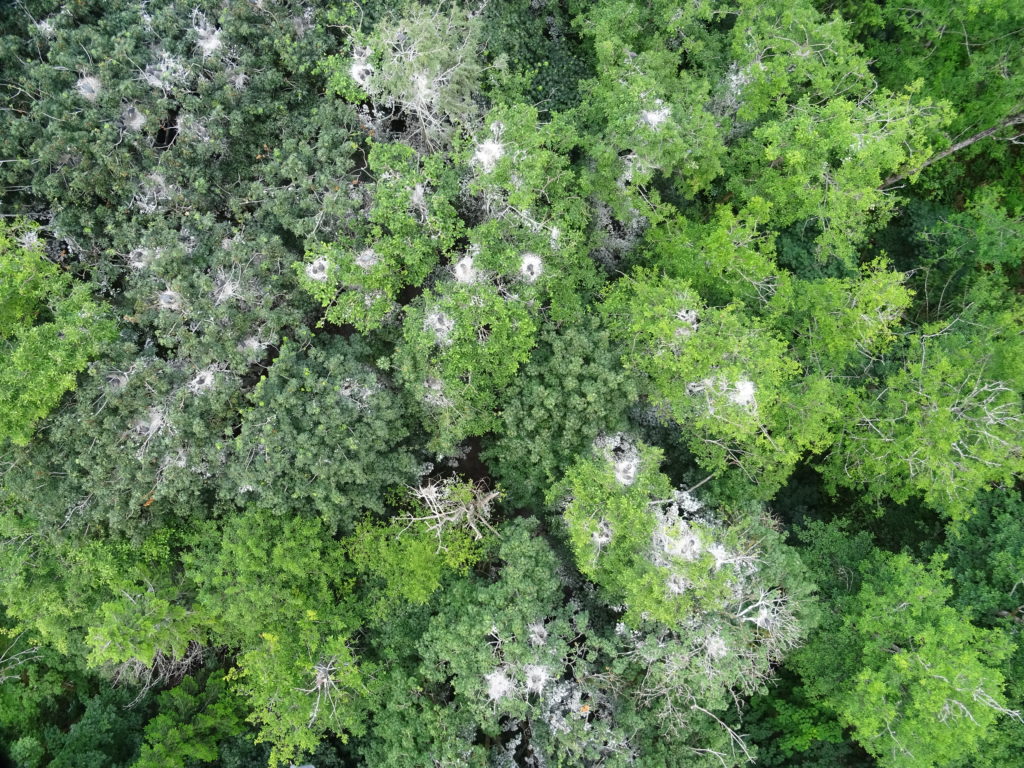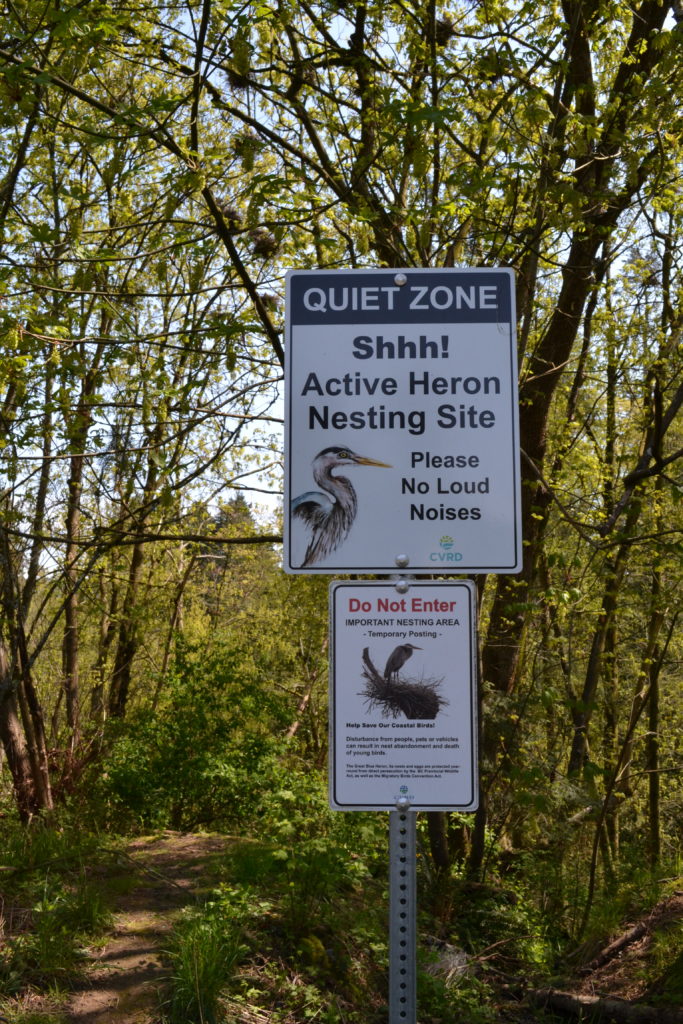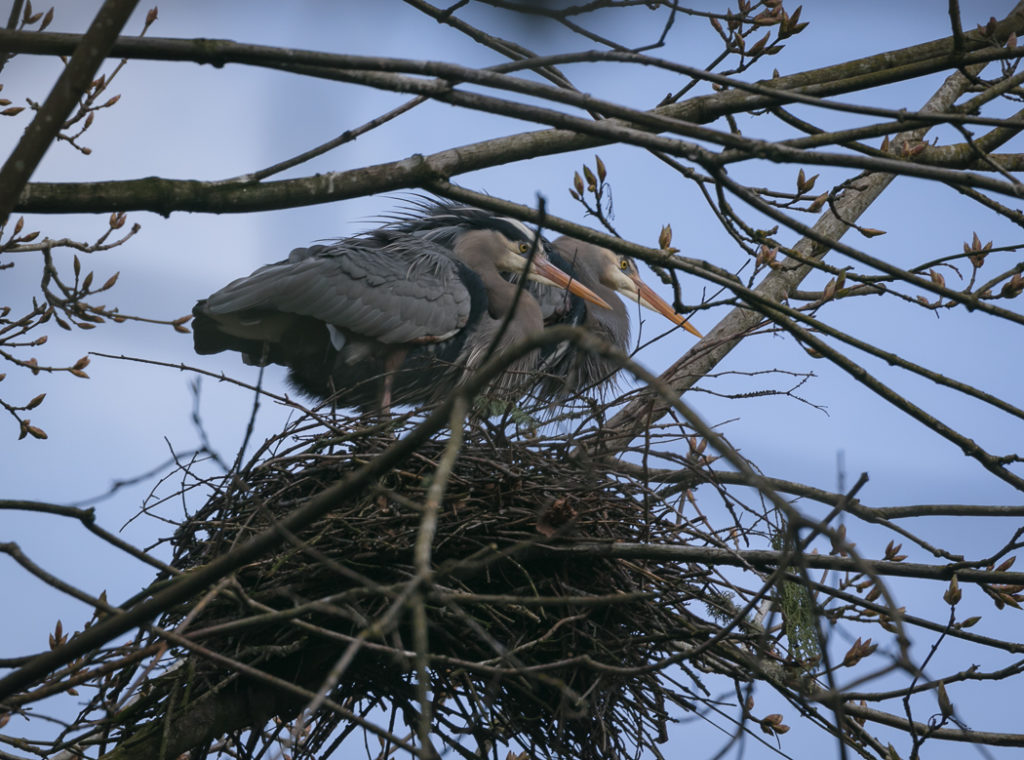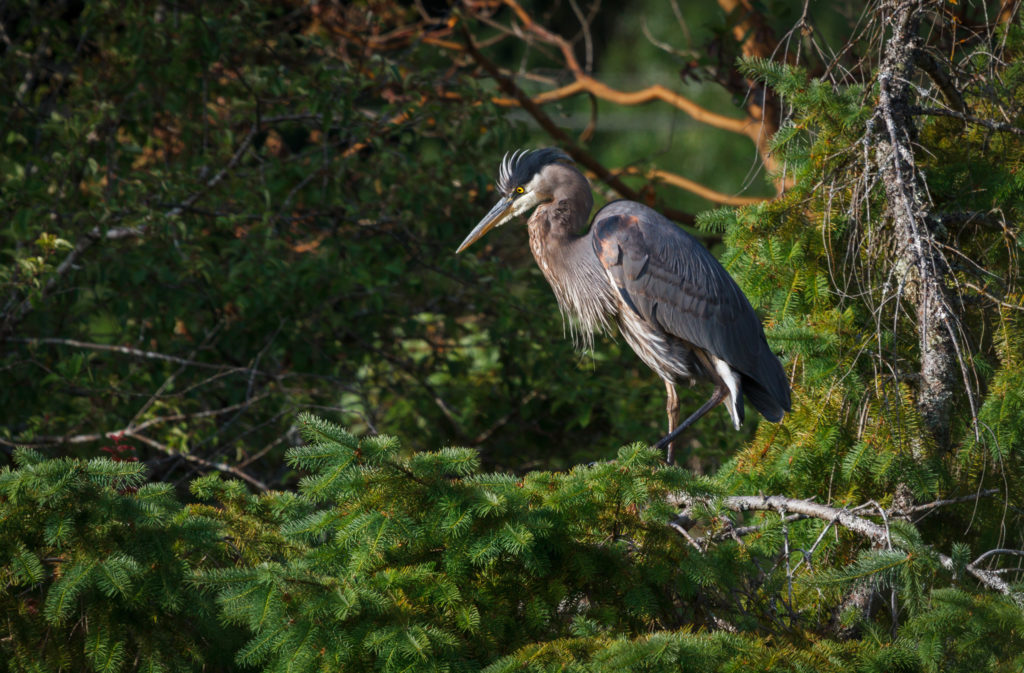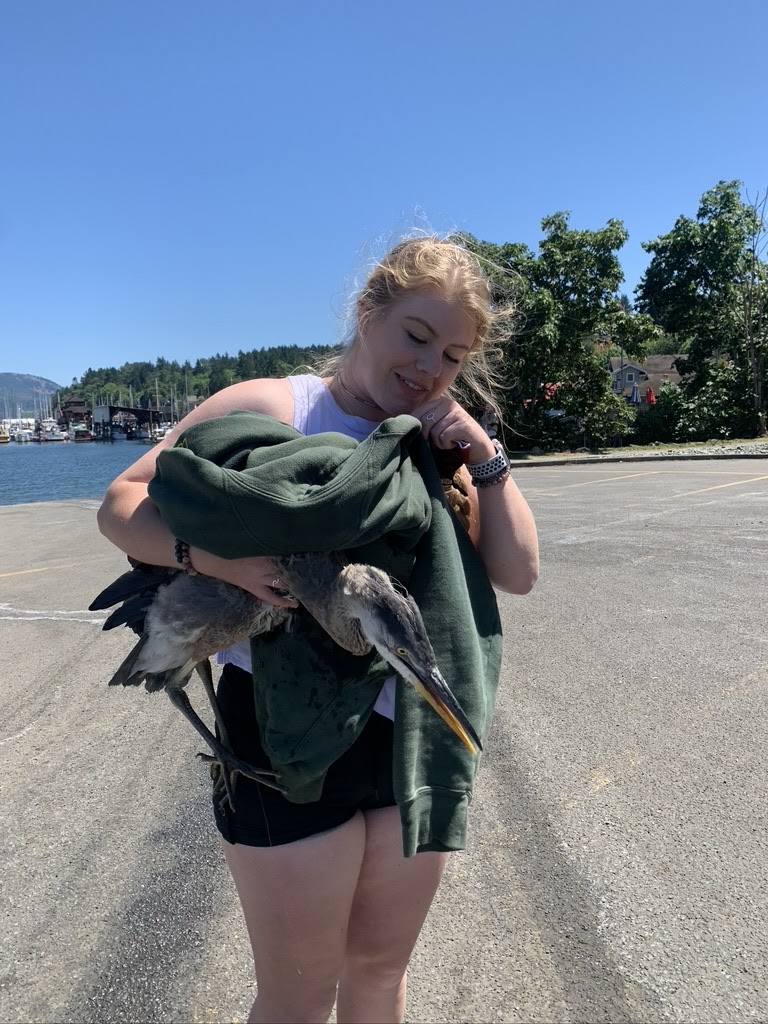Introduction
Look to the sky and you’ll note the return of the equal parts majestic and prehistoric looking birds we know as Pacific Great Blue Heron (Ardea herodias fannini), indicating spring is truly on its way. They haven’t strayed far, only dispersed to their winter fishing territories in local watersheds, as this sub-species is non-migratory. Herons can be observed in all sorts of habitats in the Cowichan Valley: from salt and freshwater marshes, streams, lakes, to backyard ponds and open fields where fish, frogs and other small amphibians are available to eat. Their gathering for nesting season is truly a sight to behold. You’ll see more and more showing up at the estuary or flying overhead with sticks in the bills for spring nest repair. And the Cowichan Estuary Nature Centre’s Web Cam makes it easy for you to tune in to watch nesting in action, or come to Hecate Park for a picnic to observe them first hand. Low tide is an especially good time to observe them forage in the mud flats! To access the Heron Cam scroll down to the bottom of this page.
Read
Learn about the 30-year nesting history in Cowichan Bay, and the launch of the heron cam project Heron Camera Launch
Join the Coastal Waterbird Survey every month. Everyone is welcome! Coastal Waterbird Survey
Look
Watch
Watch the herons live at their rookery! The colony returned on February 17th this year at the Wessex Ravine in Cowichan Bay. The Nature Centre will be working with FLNRORD (Ministry of Forests, Lands, Natural Resource Operations and Rural Development Contacts) to survey nest count and the number of fledglings using the heron camera.
Click on the screen above to activate the camera. Maximize the view by clicking the square in the bottom right corner. Take control of the camera for 5 minutes by clicking the Control toggle on the bottom right corner of the screen. Enjoy!
Listen
Caption: Herons emit deep squawks. Listen to the Great Blue Heron flying into a creek in the Comox Valley. Belted Kingfishers and American Crows can also be heard in the background.
Audio Credit: Simon Elliott, XC597965. Accessible at www.xeno-canto.org/597965.
Caption: Great Blue Herons are most vocal during the breeding season. Listen to the begging calls of juvenile herons at a rookery. Baby herons hatch after 25 to 30 days of incubation, and begin to beg for food. Adult herons regurgitate (bring swallowed food back up) to feed their babies.
Audio Credit: Christopher McPherson, XC445084. Accessible at www.xeno-canto.org/445084.
Resources
- Find more images, audio and video clips of Great Blue Herons from eBird.
- Look at this Audubon map on how climate change will shift the range of herons.
- Watch National Geographic’s short video on the heron’s secret weapon!
- Teach your students about urban sound pollution using resources from the Noise Project.
- Listen to a podcast on the Squamish creation story of herons from Seeking Office.
- Read a government report on heron populations on Vancouver Island and the Gulf Islands.
- Read a research article from the NRC Research Press on how herons consume thousands of juvenile salmon.
- Use a Merlin Bird ID app to keep track of the birds that you see in your neighbourhood!
- Try the Nature Centre’s word search on estuary birds.

